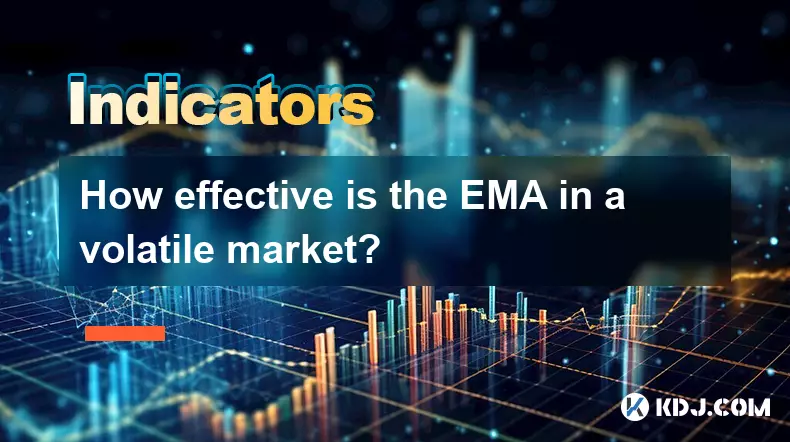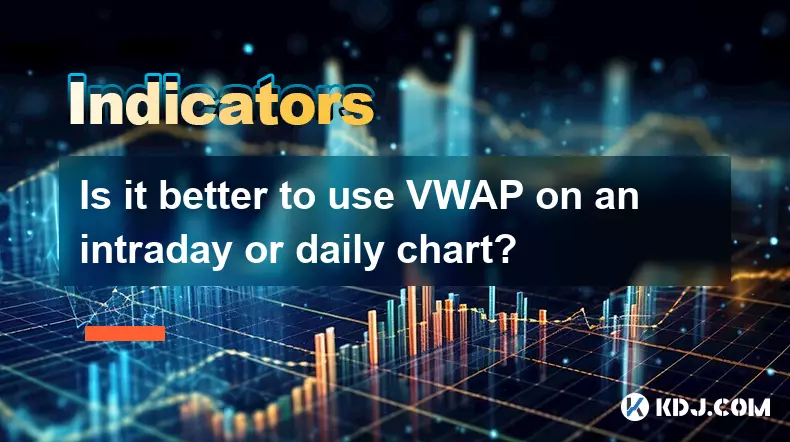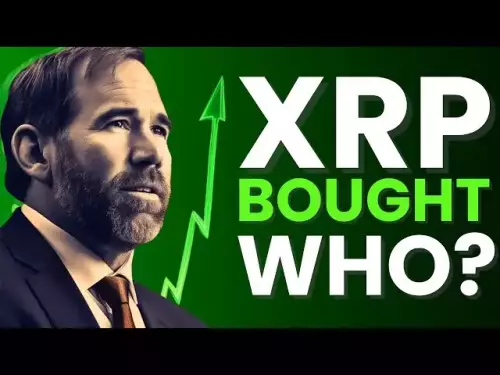-
 bitcoin
bitcoin $108842.957301 USD
-1.88% -
 ethereum
ethereum $3931.777121 USD
-1.66% -
 tether
tether $1.000186 USD
-0.03% -
 bnb
bnb $1153.250882 USD
-2.20% -
 xrp
xrp $2.367904 USD
-1.94% -
 solana
solana $186.182050 USD
-4.20% -
 usd-coin
usd-coin $0.999997 USD
0.00% -
 tron
tron $0.316949 USD
-1.00% -
 dogecoin
dogecoin $0.190780 USD
-3.12% -
 cardano
cardano $0.651324 USD
-2.67% -
 hyperliquid
hyperliquid $37.141055 USD
-0.85% -
 ethena-usde
ethena-usde $0.999224 USD
-0.09% -
 chainlink
chainlink $17.579031 USD
-2.47% -
 bitcoin-cash
bitcoin-cash $509.426284 USD
-2.79% -
 stellar
stellar $0.315298 USD
-2.93%
How effective is the EMA in a volatile market?
The EMA’s sensitivity to recent price data makes it a valuable tool in volatile crypto markets, helping traders spot trends quickly—though false signals remain a risk during erratic swings.
Oct 13, 2025 at 08:18 pm

Understanding EMA in Volatile Market Conditions
1. The Exponential Moving Average (EMA) places greater weight on recent price data, making it more responsive to sudden shifts in market sentiment. In volatile markets where prices swing rapidly, this responsiveness allows traders to detect trend changes faster than with Simple Moving Averages (SMA).
2. During periods of high volatility, such as those commonly seen in the cryptocurrency markets, asset prices can shift dramatically within hours. The EMA’s sensitivity to new information helps traders react quickly, reducing lag and potentially capturing early momentum.
3. Traders often use shorter EMAs like the 9-period or 12-period to track rapid movements. These settings are particularly popular in day trading strategies where timing is critical and delays can lead to missed opportunities or increased risk exposure.
4. Because the EMA emphasizes recent data, it tends to stay closer to current price action during sharp rallies or sell-offs. This proximity improves its utility as a dynamic support or resistance level in fast-moving environments.
5. While the EMA adapts quickly, this same trait can generate false signals when volatility leads to erratic price spikes not indicative of a true trend reversal. Whipsaws—rapid back-and-forth price movements—can trigger premature entries or exits based on misleading EMA crossovers.
Strategic Use of EMA in Crypto Trading
1. Many crypto traders combine multiple EMAs, such as the 20-day and 50-day, to create crossover systems. When the shorter EMA crosses above the longer one, it may signal bullish momentum; the reverse suggests bearish conditions. In volatile markets, these signals appear more frequently but require confirmation from volume or other indicators.
2. Scalpers in the Bitcoin or Ethereum markets often rely on 5-minute or 15-minute charts with tight EMA settings. These setups allow them to align trades with micro-trends that emerge and dissipate within minutes due to news events or macroeconomic announcements.
3. Some traders overlay EMAs on Relative Strength Index (RSI) or MACD to filter out noise. For instance, an EMA crossover on the MACD histogram during extreme RSI readings might be treated with caution, avoiding impulsive decisions during overbought or oversold phases.
4. In altcoin trading, where price swings can exceed 30% in a single day, using EMAs helps establish structure amid chaos. Coins like Dogecoin or Shiba Inu have demonstrated patterns where EMA bounces coincide with retail buying surges.
5. Position traders may use daily EMAs to determine long-term bias while ignoring intraday fluctuations. Holding above the 200-day EMA could indicate ongoing accumulation, even if short-term volatility causes panic selling.
Limitations and Risk Management
1. The EMA does not predict price direction—it only reflects past behavior with adjusted weighting. In highly unpredictable markets, relying solely on EMA signals without context increases the likelihood of losses.
2. Sudden exchange outages, flash crashes, or whale manipulation can distort price data, causing EMAs to give misleading readings. Events like Bitcoin dropping 20% in two minutes due to leverage liquidations can trigger cascading EMA-based sell signals across algorithms.
3. Traders must pair EMA analysis with risk controls such as stop-loss orders and position sizing. Even accurate signals can fail in black swan scenarios common in digital assets.
4. Backtesting EMA strategies on historical crypto data reveals that performance varies widely across bull and bear cycles. What works during steady uptrends may underperform in choppy, sideways markets filled with fake breakouts.
5. Over-optimizing EMA periods for past data risks curve-fitting, leading to strategies that look effective in hindsight but fail in live trading when market dynamics shift.
Frequently Asked Questions
What timeframes are best for EMA in cryptocurrency trading?Shorter timeframes like 5-minute or 1-hour charts work well for active traders using 9 or 12-period EMAs. Long-term investors prefer daily charts with 50-day and 200-day EMAs to assess broader trends.
Can EMA be used alone for trading decisions?Relying exclusively on EMA is risky. It should be combined with volume analysis, order book depth, or on-chain metrics to improve accuracy, especially in markets prone to spoofing and pump-and-dump schemes.
How does EMA compare to SMA in crypto markets?EMA reacts faster than SMA due to its emphasis on recent prices. In fast-moving crypto environments, this speed offers an edge, though it also increases susceptibility to false signals during consolidation phases.
Do institutional traders use EMA in their algorithms?Yes, many algorithmic trading systems incorporate EMA crossovers as part of larger technical models. Institutional bots often layer EMAs with liquidity detection and time-weighted average price (TWAP) execution logic.
Disclaimer:info@kdj.com
The information provided is not trading advice. kdj.com does not assume any responsibility for any investments made based on the information provided in this article. Cryptocurrencies are highly volatile and it is highly recommended that you invest with caution after thorough research!
If you believe that the content used on this website infringes your copyright, please contact us immediately (info@kdj.com) and we will delete it promptly.
- Crypto Markets in the Red: BTC Feels the Squeeze of Liquidity Tightening
- 2025-10-17 20:25:17
- XRP, Millionaire Dreams, and the Token Landscape: A New Yorker's Take
- 2025-10-17 20:25:17
- Digital Gold, Bitcoin, and Market Value: Navigating the Crypto Landscape
- 2025-10-17 20:30:15
- FleetMining, Cloud-Mining, and Investment in 2025: What You Need to Know
- 2025-10-17 20:30:15
- Dogecoin's Wild Ride: Market Turmoil and Price Decline Explained
- 2025-10-17 18:25:12
- Newsmax, Crypto, and the Frontier of Corporate Finance: A New Yorker's Take
- 2025-10-17 18:45:16
Related knowledge

What's the main difference between VWAP and TWAP?
Oct 12,2025 at 11:54am
Understanding VWAP and Its Role in Crypto Trading1. Volume Weighted Average Price (VWAP) is a trading benchmark that calculates the average price of a...

How do you identify exhaustion moves using VWAP and its bands?
Oct 12,2025 at 08:00am
Understanding the Role of Decentralized Exchanges in Crypto Trading1. Decentralized exchanges (DEXs) operate without a central authority, allowing use...

Is it better to use VWAP on an intraday or daily chart?
Oct 15,2025 at 02:01am
Intraday Trading and the Role of VWAP1. Intraday traders frequently rely on VWAP (Volume Weighted Average Price) as a dynamic benchmark for assessing ...

How do you use VWAP to scale in and out of positions?
Oct 14,2025 at 02:19am
Understanding VWAP as a Dynamic Benchmark1. The Volume Weighted Average Price (VWAP) is not just an indicator—it functions as a dynamic benchmark that...

What are the main advantages of using VWAP over EMA?
Oct 11,2025 at 02:18am
Main Advantages of Using VWAP Over EMA1. Volume-Weighted Average Price (VWAP) incorporates trading volume into its calculation, offering a more accura...

How do you use VWAP on different chart types like Heikin Ashi?
Oct 11,2025 at 05:01pm
Understanding VWAP in the Context of Heikin Ashi Charts1. The Volume Weighted Average Price (VWAP) is a powerful analytical tool commonly used by trad...

What's the main difference between VWAP and TWAP?
Oct 12,2025 at 11:54am
Understanding VWAP and Its Role in Crypto Trading1. Volume Weighted Average Price (VWAP) is a trading benchmark that calculates the average price of a...

How do you identify exhaustion moves using VWAP and its bands?
Oct 12,2025 at 08:00am
Understanding the Role of Decentralized Exchanges in Crypto Trading1. Decentralized exchanges (DEXs) operate without a central authority, allowing use...

Is it better to use VWAP on an intraday or daily chart?
Oct 15,2025 at 02:01am
Intraday Trading and the Role of VWAP1. Intraday traders frequently rely on VWAP (Volume Weighted Average Price) as a dynamic benchmark for assessing ...

How do you use VWAP to scale in and out of positions?
Oct 14,2025 at 02:19am
Understanding VWAP as a Dynamic Benchmark1. The Volume Weighted Average Price (VWAP) is not just an indicator—it functions as a dynamic benchmark that...

What are the main advantages of using VWAP over EMA?
Oct 11,2025 at 02:18am
Main Advantages of Using VWAP Over EMA1. Volume-Weighted Average Price (VWAP) incorporates trading volume into its calculation, offering a more accura...

How do you use VWAP on different chart types like Heikin Ashi?
Oct 11,2025 at 05:01pm
Understanding VWAP in the Context of Heikin Ashi Charts1. The Volume Weighted Average Price (VWAP) is a powerful analytical tool commonly used by trad...
See all articles










































































